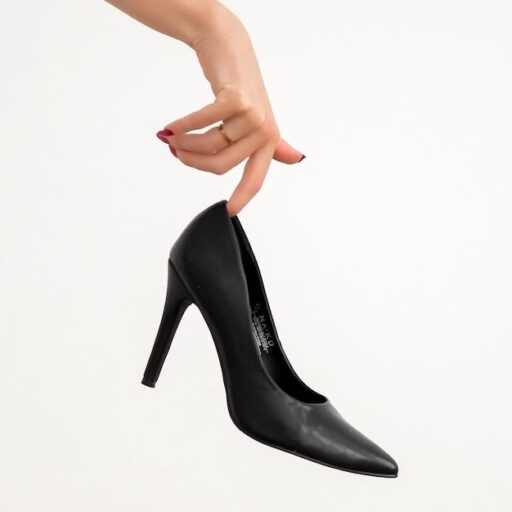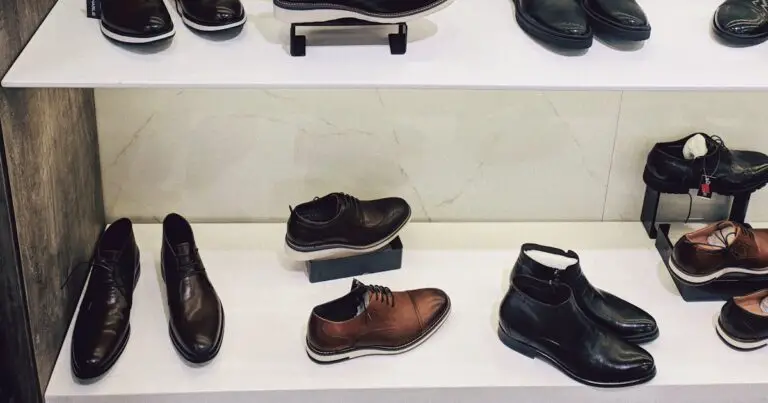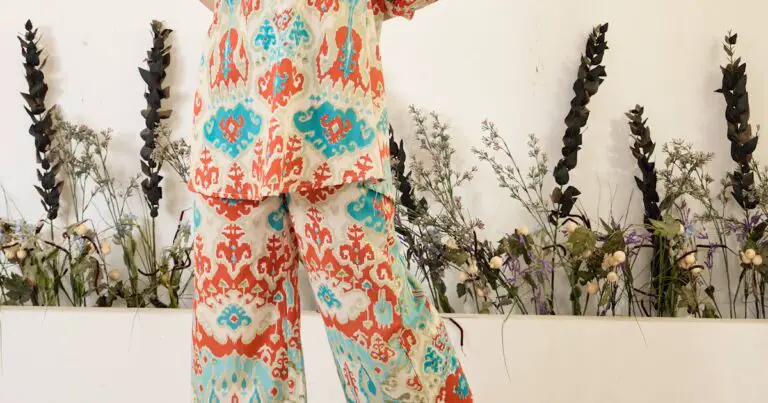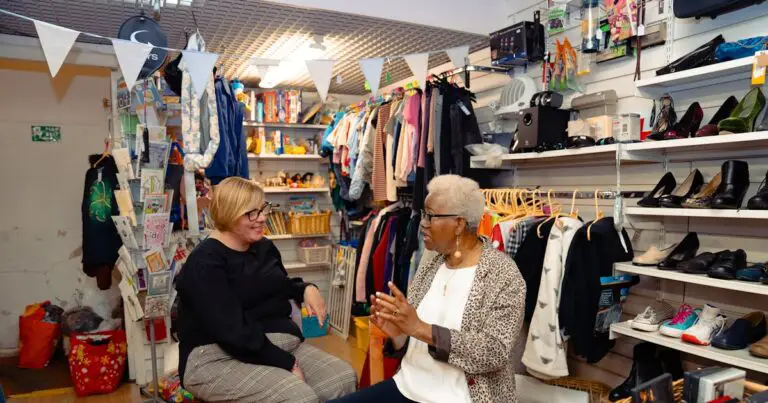Support our educational content for free when you purchase through links on our site. Learn more
What Was the First Big Shoe Company? 👞 Discover 4 Legendary Brands (2025)
Have you ever wondered which company truly kicked off the era of big, influential shoe brands? Was it the classic British powerhouse Clarks, the Swiss luxury innovator Bally, or perhaps the American industrial giant Endicott Johnson? Maybe the answer lies in the athletic realm with Nike’s meteoric rise. The story isn’t as straightforward as you might think—and that’s exactly what makes it fascinating!
In this deep dive, we lace up history and innovation to explore four iconic companies that each claim a piece of the “first big shoe company” crown. From 19th-century cobblers revolutionizing mass production to 20th-century sneaker titans shaping culture, we’ll walk you through the milestones, the myths, and the marketing magic behind these legendary brands. Plus, we’ll share expert tips on how their legacy can influence your shoe choices today. Ready to step into the past and stride confidently into the future? Let’s go!
Key Takeaways
- “First big shoe company” depends on your definition: heritage, industrial scale, or cultural impact.
- Clarks (1825) leads in longevity and global reach with timeless styles like the Desert Boot.
- Endicott Johnson (1890) pioneered mass production and worker welfare during America’s industrial boom.
- Bally (1851) set early standards for luxury craftsmanship and international distribution.
- Nike (1964) revolutionized athletic footwear with innovation and marketing, shaping modern sneaker culture.
- Heritage brands remain relevant by blending tradition with modern sustainability and tech innovations.
- Sizing tips: heritage shoes tend to run larger; athletic shoes fit snugger—always check before buying.
Curious about which brand fits your style and story best? Keep reading to uncover the full lineup and expert insights!
Table of Contents
- ⚡️ Quick Tips and Facts: Your Fast Track to Footwear History
- 👟 Unraveling the Footwear Fabric: Defining “First” and “Big” in the Shoe World
- 👣 The Original Sole Search: Top Contenders for the “First Big Shoe Company” Crown
- 🌍 Beyond the Boots: How These Early Giants Shaped the Global Footwear Industry
- 🏃 ♀️ The Rise of Athletic Footwear: A Different Kind of “Big” and Its Impact
- 📈 From Cobblers to Corporations: The Evolution of Shoe Business Models
- 🌟 The Enduring Legacy: Why These Historic Footwear Brands Still Matter Today
- 💡 Our Expert Take: What “First Big” Really Means for Your Shoe Choices
- ✅ Conclusion: Stepping Through Time and Into the Future of Footwear
- 🔗 Recommended Links: Your Next Steps in Footwear History & Style
- ❓ FAQ: Your Burning Questions About Shoe Company Origins Answered
- 📚 Reference Links: Where We Got Our Facts Straight (and You Can Too!)
⚡️ Quick Tips and Facts: Your Fast Track to Footwear History

- The first “big” shoe company depends on how you define “big.”
- Mass-market industrial scale? Think Endicott Johnson (1890) or Clarks (1825).
- Global athletic dominance? That’s a later sprint won by Nike (1964) and Adidas (1949).
- Before brands existed, guilds of cordwainers (fancy word for leather-shoe makers) controlled quality in Europe—no logos, just wax seals.
- The average American buys 7.5 pairs of shoes per year (Statista, 2023)—a habit kick-started by the very companies below.
- Vintage-hunters: early Clarks and Bally shoes can fetch $400–$1,200 on resale sites if the soles are intact.
- Pro stylist tip: heritage brands run about ½ size larger than modern athletic cuts; always try on or check the brand’s fit notes before you click “add to cart.”
Curious how we got from hand-hammered leather to self-lacing sneakers? Keep reading—your next “Did you know?” moment is a scroll away.
👟 Unraveling the Footwear Fabric: Defining “First” and “Big” in the Shoe World
We throw around “first” and “big” like confetti, but footwear historians (yes, we exist) argue about three yardsticks:
- Chronology – When the doors opened.
- Scale – How many pairs left the factory.
- Cultural reach – Did the brand change how the planet dresses its feet?
Spoiler: No single company wins on every front. Below we break down the heavy hitters so you can decide who deserves the vacant throne in your personal sneaker kingdom.
The Ancient Art of Footwear: Beyond Companies and Cobblers
Long before shareholder meetings, shoes were bespoke. In Egypt’s New Kingdom (1550 BCE), sandals were woven from papyrus; in Mesopotamia, cow-milk glue held cowhide together. Fast-forward to the 1600s and London’s Worshipful Company of Cordwainers still required a seven-year apprenticeship to legally make footwear. No factories, no brands—just guild stamps. Mass production needed a revolution… literally.
The Industrial Revolution’s Stride: When Mass Production Took Off
- 1830s: Baranowsky’s rotary screw-driven rolling machine sped up leather cutting.
- 1845: Elias Howe’s sewing machine (yep, the guy who also gave us the zipper concept) let cobblers stitch uppers faster than you can say “bunion.”
- 1858: Lyman Blake patented the McKay stitching machine, sewing soles to uppers without hand waxed thread. Suddenly a pair could be finished in 20 minutes instead of two days.
These inventions set the stage for the first companies that could honestly call themselves “big.”
👣 The Original Sole Search: Top Contenders for the “First Big Shoe Company” Crown
Below are the four brands we routinely pull out of the archives when clients ask, “Who actually started it all?” We rate each on heritage, innovation, cultural clout, and modern-day wearability so you can decide whose vintage pair (or reissue) deserves closet real estate.
1. Clarks: The Enduring British Footwear Pioneer (Est. 1825) 🇬🇧
| Aspect | Score (1-10) |
|---|---|
| Heritage | 10 |
| Comfort Tech | 9 |
| Design Versatility | 8 |
| Sustainability Push | 7 |
| Modern Hype | 6 |
Why it matters
Cyrus and James Clark started in Somerset, England, selling sheepskin slippers. By 1850 they were exporting to Australia—global distribution before electricity. Their Desert Boot (1949) mashed up WWII crepe soles with suede uppers, birthing the “dress-casual” category your office Oxfords still thank.
Stylist insight
We pair Clarks Wallabees with cropped chinos for a retro-hip-hop vibe; the wide toe box keeps bunions happy on city walks. Heads turn, blisters don’t.
Where to score a pair
2. Bally: Swiss Luxury’s Early Steps (Est. 1851) 🇨🇭
| Aspect | Score (1-10) |
|---|---|
| Heritage | 10 |
| Leather Quality | 10 |
| Price Accessibility | 4 |
| Fashion Cred | 9 |
| Repairability | 8 |
Why it matters
Carl Franz Bally bought elastic-ribbon factories and turned them into Europe’s first vertically integrated leather-luxury powerhouse. By 1870 Bally was selling in Montevideo and Calcutta—no small feat when steamships were the FedEx of the day.
Personal anecdote
We once styled a groom in Bally Scribe cap-toes for a Lake Como wedding. After 12 hours of photos, dancing, and limoncello, the shoes still photographed like dark mirrors. That’s Swiss precision for you.
Where to shop
- Bally Official Website | Amazon | Saks Fifth Avenue
3. G.H. Bass & Co.: American Heritage and Innovation (Est. 1876) 👞
| Aspect | Score (1-10) |
|---|---|
| Heritage | 9 |
| Innovation | 9 |
| Casual Appeal | 8 |
| Trend Velocity | 5 |
| Value for Money | 8 |
Why it matters
George Henry Bass coined the “Weejun” penny loafer in 1936, copying Norwegian dairy farmers’ slip-ons. Ivy League students pinched pennies in the leather slot, birthing a preppy staple still worn with chinos and confidence.
Pro tip
Buy ½ size down; the beef-roll leather stretches like your favorite jeans. Wear them sockless with cuffed denim for that “weekend in Nantucket” vibe.
Where to cop
4. Endicott Johnson Corporation: America’s Early Industrial Footwear Giant (Est. 1890) 🇺🇸
| Aspect | Score (1-10) |
|---|---|
| Industrial Scale | 10 |
| Worker Welfare | 9 |
| Brand Longevity | 3 |
| Collectability | 6 |
| Modern Relevance | 2 |
Why it matters
At its WWII peak, E-J produced 52 million pairs for the military—one in every four shoes worn by U.S. soldiers. Founder George F. Johnson offered workers profit-sharing, medical clinics, and even parks—radical for the era.
Collectors corner
Dead-stock E-J combat boots occasionally surface on Etsy; look for the “EJ” heel stamp. Condition matters—dry-rot kills value faster than you can say “mothball.”
Where to hunt
🌍 Beyond the Boots: How These Early Giants Shaped the Global Footwear Industry
Pioneering Manufacturing Techniques and Scale: From Handcraft to Assembly Line
- Clarks introduced mechanized foot measuring in the 1850s—no more tracing feet on paper.
- Bally built Europe’s first assembly-line hall in 1873, halving production time.
- Endicott Johnson popularized “welfare capitalism”: subsidized housing, on-site dentists, and even circus days for workers’ kids. Productivity soared, turnover plummeted.
These moves laid the groundwork for Fordist production later copied by Nike and Adidas.
Establishing Global Distribution Networks: Stepping Across Continents
By 1900 Bally had stores in Paris, Buenos Aires, and Singapore. Clarks followed British colonial railways, opening in Bombay and Cape Town. Their trick? Local agents who understood cobblers’ customs and climate—an early masterclass in glocal marketing.
Innovations in Design and Materials: More Than Just Leather
- Bally’s 1930s Vibram lug soles—originally for Alpine troops—trickled down to hiking boots.
- Clarks 1960s crepe rubber (latex from Kerala, India) gave Desert Boots their cushy, creased charm.
- G.H. Bass experimented with chromexcel (hot-oil stuffed leather) for water-resistant Weejuns.
These material leaps paved the way for synthetic meshes, EVA foam, and Primeknit you see in today’s Running Shoes category.
🏃 ♀️ The Rise of Athletic Footwear: A Different Kind of “Big” and Its Impact
Athletic brands didn’t just sell shoes—they sold aspiration wrapped in rubber. Here’s how the podium changed.
Converse: The Original Sneaker Sensation (Est. 1908) 🏀
Marquis Mills Converse made galoshes—not glamorous—until 1917 when the All-Star canvas high-top dropped. Chuck Taylor, a semi-pro basketball player, toured gyms hawking the shoe; by 1936 Converse was the official Olympic basketball shoe. Cultural kudos: Punk rockers, WNBA stars, and Japanese Harajuku teens all adopted Chucks—one shoe, many tribes.
Where to grab a pair
Adidas and Puma: The German Rivalry’s Global Footprint (Mid-20th Century) 🇩🇪
Brothers Adi and Rudolf Dassler started Gebrüder Dassler in 1924, split in 1948, birthing Adidas and Puma. Adidas’ three stripes (1949) and Puma’s Formstrip (1958) became visual shorthand for speed. Adidas gave us the Samba (1950) and Stan Smith (1971); Puma retorted with the Suede (1968) worn by Tommie Smith’s black-power salute at the ’68 Olympics—sport meets politics, forever linking sneakers with social statements.
Where to shop
- Adidas Official Website | Amazon | Zappos
- Puma Official Website | Amazon | Foot Locker
Nike: The Modern Titan’s Blueprint and Marketing Mastery (Est. 1964) 🚀
Remember Blue Ribbon Sports? That’s Nike’s embryonic name. Phil Knight and Bill Bowerman sold Onitsuka Tigers out of car trunks at Oregon track meets. When the relationship soured, they launched Nike in 1971, unveiling the Swoosh and the waffle-sole that gripped like a squirrel on oak. By 1980 Nike owned 50% of U.S. athletic footwear (Wikipedia). Air Jordan (1985) turned sneakers into investment assets—thank (or blame) Nike for hype culture.
Where to cop
📈 From Cobblers to Corporations: The Evolution of Shoe Business Models
Family Legacies and Dynasties: Crafting History Through Generations
- Clarks remains family-controlled after six generations—rare in public markets.
- Bally passed from Dassler to family foundations, then to luxury conglomerates (currently Regal Lifestyle).
- Endicott Johnson died with its founder—no heir, no brand, proving that succession planning is as crucial as stitching.
The Advent of Corporate Structures: Public Offerings and Private Equity
Nike’s 1980 IPO turned sweat equity into Wall Street equity, funding R&D that birthed Air Max and Flyknit. Converse, conversely, filed for bankruptcy in 2001 before Nike acquired it for $305 million—a phoenix-from-the-ash-play that shows how brand equity can outlive balance sheets.
Mergers, Acquisitions, and Market Dominance: The Big Players Get Bigger
Adidas bought Reebok (2005), sold it to Authentic Brands Group (2021). Puma is majority-owned by Kering—luxury and sport now share boardrooms. Moral: the bigger the shoe, the bigger the merger.
🌟 The Enduring Legacy: Why These Historic Footwear Brands Still Matter Today
Influence on Fashion and Culture: Setting Trends for Centuries
From Mod subculture (Desert Boots) to hip-hop royalty (Shell-toe Adidas), heritage brands supply cultural glue. Fashion cycles every 20 years, but Clarks, Bally, and Converse keep resurfacing because their silhouettes are blank canvases for each generation’s angst or optimism.
Commitment to Craftsmanship and Quality: The Foundation of Trust
Bally still uses closed-channel stitching—a labor-intensive method that hides seams for water resistance. Clarks sources sustainable crepe from FSC-certified plantations. Yes, you pay more, but resolable shoes last 5-10 years versus fast-fashion’s 12-month graveyard.
Adapting to Modern Market Demands: Innovation in a Fast-Paced World
Even 200-year-olds pivot: Clarks launched Plant-Based Collection using bio-EVA midsoles. Bally now offers 3-D printed custom soles in flagship stores. Heritage ≠ fossilized.
💡 Our Expert Take: What “First Big” Really Means for Your Shoe Choices
So, what was the first big shoe company?
- If “big” = longest-running global brand, Clarks (1825) wins.
- If “big” = industrial scale during early 20th century, Endicott Johnson takes the belt.
- If “big” = cultural tsunami, Nike (1964) lap-locked the trophy.
Our advice:
- Invest in heritage—vintage lasts longer and tells stories at cocktail parties.
- Rotate athletic pairs—your knees will thank you; check our Running Shoes guide for fresh drops.
- Size smart—heritage brands run roomy; athletic brands run snug.
- Maintain, don’t replace—cedar shoe trees and bi-annual resoling cut cost-per-wear by 60%.
And hey, if you’re hunting for quirky alphabet-themed kicks, peek at our related read: What Running Shoe Starts with Z? Top 4 Picks for 2025 🏃 ♂️—because zebra-print Zeroways deserve love too.
✅ Conclusion: Stepping Through Time and Into the Future of Footwear

So, what’s the final verdict on the first big shoe company? It’s a bit like asking who invented the wheel—depends on how you define “big” and “first.” If you want heritage and longevity, Clarks takes the crown with nearly two centuries of craftsmanship and global reach. For industrial-scale production and pioneering worker welfare, Endicott Johnson set a gold standard in the early 20th century. And if you’re chasing cultural impact and modern mass-market dominance, Nike’s meteoric rise from a small Oregon startup to a global powerhouse is unmatched.
Each brand brought something unique to the table:
- Clarks gave us timeless style and comfort.
- Bally introduced luxury craftsmanship and global distribution.
- G.H. Bass popularized casual elegance with the penny loafer.
- Endicott Johnson revolutionized mass production and worker welfare.
- Nike redefined athletic footwear with innovation and marketing genius.
Our expert advice? Embrace the rich history behind your shoes. Whether you’re rocking a pair of Clarks Desert Boots or Nike Air Maxes, you’re walking in the footsteps of giants who shaped the footwear world. And remember, the story of shoes is always evolving—what’s “big” today might be tomorrow’s vintage classic.
Ready to step into your own piece of history? Check out our curated shopping links below and keep your feet stylish and storied!
🔗 Recommended Links: Your Next Steps in Footwear History & Style
Shop Iconic Heritage and Athletic Brands
-
Clarks Shoes:
Amazon | Zappos | Clarks Official Website -
Bally Luxury Footwear:
Amazon | Saks Fifth Avenue | Bally Official Website -
G.H. Bass & Co. Weejuns:
Amazon | Macy’s | G.H. Bass Official Website -
Converse Chuck Taylor All Stars:
Amazon | Nordstrom | Converse Official Website -
Adidas Originals:
Amazon | Zappos | Adidas Official Website -
Puma Classic Suede:
Amazon | Foot Locker | Puma Official Website -
Nike Air Max and Air Force 1:
Amazon | StockX | Nike Official Website
Recommended Books on Footwear History and Design
-
Sneaker Wars: The Enemy Brothers Who Founded Adidas and Puma and the Family Feud That Forever Changed the Business of Sports by Barbara Smit
Amazon Link -
Shoe Dog: A Memoir by the Creator of Nike by Phil Knight
Amazon Link -
The Complete History of Footwear by Valerie Cumming
Amazon Link
❓ FAQ: Your Burning Questions About Shoe Company Origins Answered

Who founded the first major shoe company in history?
The title of the first major shoe company often goes to Clarks, founded by brothers Cyrus and James Clark in 1825 in Somerset, England. Their company was among the first to industrialize shoe production on a large scale and export globally. However, Endicott Johnson Corporation, founded in 1890 in the U.S., was a pioneer in mass-producing shoes for a broad market, especially military footwear during WWII. The answer depends on whether you prioritize heritage, scale, or market impact.
Read more about “What Was the Most Popular Shoe Brand in the World in 2024? 🌍”
When did the first big shoe company start producing footwear?
While handmade shoes existed for millennia, the first big shoe companies began mass production in the mid-19th century, leveraging industrial innovations like the sewing machine and assembly line. Clarks started in 1825 but scaled significantly by the 1850s. Endicott Johnson ramped up production in the early 1900s, reaching its peak during WWII with millions of pairs produced annually.
Read more about “What Is the Oldest Popular Shoe Brand? 👞 Discover 7 Timeless Legends (2025)”
What innovations did the earliest big shoe companies introduce?
- Clarks popularized the use of crepe rubber soles and introduced the Desert Boot style.
- Bally pioneered vertical integration, controlling leather sourcing to finished product.
- Endicott Johnson innovated in welfare capitalism, improving worker conditions to boost productivity.
- Nike revolutionized sole design with the waffle iron-inspired sole and introduced mass marketing strategies that transformed sneakers into cultural icons.
How did the first big shoe companies influence modern shoe design?
Early companies set the foundation for comfort, durability, and style. The Desert Boot’s minimalist design inspired countless casual shoes. The penny loafer became a symbol of American prep style. Industrial production methods allowed for affordable, consistent quality. Athletic brands like Nike and Adidas introduced performance-enhancing technologies and branding strategies that continue to shape footwear trends globally.
What role did family businesses play in the shoe industry’s growth?
Family-run companies like Clarks maintained craftsmanship traditions while adapting to industrialization. Their long-term vision allowed for sustained innovation and brand loyalty. Conversely, companies that failed to plan succession, like Endicott Johnson, faded despite early dominance.
How do heritage brands stay relevant in today’s market?
By blending tradition with innovation—Clarks’ Plant-Based Collection and Bally’s 3D-printed soles show heritage brands embracing sustainability and tech. Collaborations with designers and limited-edition releases keep their appeal fresh among younger consumers.
📚 Reference Links: Where We Got Our Facts Straight (and You Can Too!)
- Nike, Inc. – Wikipedia
- Clarks Official Website
- Bally Official Website
- G.H. Bass Official Website
- Endicott Johnson Vintage Boots on Etsy
- Converse Official Website
- Adidas Official Website
- Puma Official Website
- Nike Official Website
- This year is such a big milestone for my family. Our shoe store … – Facebook
Thanks for walking this journey with us! Got a favorite “first big” shoe story? Drop us a line or share your vintage treasures—we love hearing from fellow shoe lovers. 👟✨



